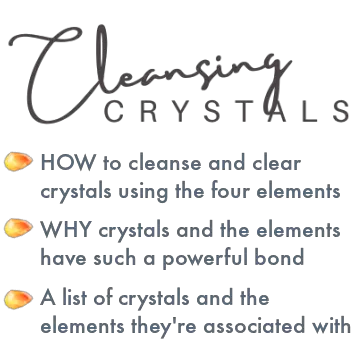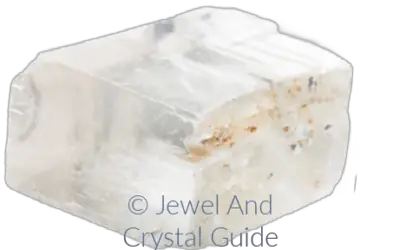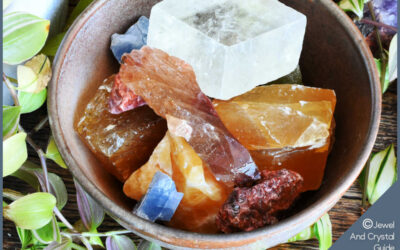Whether you bought raw rose quartz from a store or found a piece outside, it’s important to know how to clean and maintain this special crystal to enjoy its true brilliance.
The best way to clean raw rose quartz is to scrub it with a bristle brush and warm, soapy water made with liquid detergent. Then rinse the quartz in clean water and leave it on a warm windowsill to dry. If there are stains, minerals, or stubborn dirt on it, blast them off with water or air pressure.
Rose quartz is a hard gemstone that isn’t easily damaged from cleaning. But using the right cleaning method for the problem area will get the crystal as clear and beautiful as it can be, and fetch the highest price if you ever want to sell it.
In this article, we’ll cover:
- 10 steps to keep raw rose quartz clean
- How to clean raw rose quartz that’s stained or dirty from the ground
How to keep raw rose quartz clean
Rose quartz is made from minerals, including silica, manganese and iron. These minerals form the rose quartz over millions of years and give it its pink color.
The safest way to keep raw rose quartz clean is to wash it with warm, soapy water that’s made with liquid detergent. Use an old toothbrush or nailbrush to scrub off dust and dirt in circular movements. Rinse the crystal with clean water to remove the suds, then wipe it with a cloth and leave it to air dry.
Below are 10 steps on how to keep raw rose quartz clean:
- Run warm (not hot) water into a basin or sink
- Add some liquid detergent to the water
- Stir the water with a spoon or your hands, to make the soap bubble
- Put the rose quartz in the water
- Leave the rose quartz to soak for a few minutes
- Remove the quartz from the water
- Dip a toothbrush, nailbrush, or bristle brush into the soapy water and use it to clean the quartz with soft circular motions
- Keep dipping the brush in the soapy water and rubbing the crystal until you’ve been over the entire quartz. Make sure you clean the entire crystal, especially in the cracks and crevices where dust collects
- Rinse the rose quartz in clean water, rubbing it gently with your fingers
- Dry the crystal with a cloth, then put it on a warm windowsill to finish air drying
In between these deep cleans, wipe the quartz with a damp cloth at least once a week to keep it clean.
The steps above are to keep raw rose quartz free from dust and everyday dirt. If you want to cleanse the energy and vibrations of your crystal, click here for my full guide on how to cleanse rose quartz.
How to clean raw rose quartz from the ground
The methods below are recommended for genuine rose quartz. If there’s any chance the crystal is a fake, and probably made from glass, these cleaning methods probably won’t work. If you aren’t sure, click here to find out how to tell a real rose quartz from a fake.
If you found rose quartz outside, it’s probably dirty, caked in mud or clay, and has stains on it. The great news is that spending a few minutes cleaning it properly can increase the crystal’s value by hundreds of dollars, if you decide to sell it.
Below are three simple steps to remove dirt and stains from raw rose quartz.
Wash the rose quartz with soap and water
If you only have a few crystals to wash, use soapy water and a soft-bristle brush to scrub off the dirt. It’s best to use liquid detergent for this.
Spray away dirt that’s stuck in the crevices with a spot cleaning gun. Wear safety goggles to protect your eyes before doing this as dirt and water tend to spray everywhere. The closer you hold the crystal to the cleaning gun, the stronger the spray will be, and the more power it has to remove tough dirt.
If there’s a lot of rose quartz to be cleaned, high-pressure water is the most effective cleaner…
Place the quartz on a solid floor outside, such as a driveway or concrete paving. Point a hose or pressure washer at the crystals and spray them with a strong blast of water. Be careful not to let the crystals fly into each other when the water hits them, or they could chip or crack each other.
If you don’t have a pressure washer and a hose isn’t getting the rose quartz clean, take a trip to a DIY carwash and use the pressure hoses there to clean the crystals.
After washing, leave the rose quartz on a windowsill on a warm day to dry out. Any leftover dirt or clay should dry out in the sun’s heat and start cracking off.
Repeat this wash-dry cycle until all the dirt’s gone or you can’t get any more dirt off the quartz. Once you’re satisfied that you’ve removed as much dirt as possible with water, move on to the next step.
Scratch away marks
Once you’ve washed off as much dirt as possible, it’s time to scrape at stubborn marks to see what you’re dealing with.
Rose quartz is a 7 out of 10 on the Mohs mineral hardness scale, which makes it a fairly hard gemstone with very few things that can cut or damage it. In fact, not even a knife or steel nail can cut quartz.
Try to scratch off a small area of a stain or mark with a utility knife, such as a Stanley knife, even if you need to scrape hard to get it off.
If you can scrape off a small area of a stain, it means the stain is sitting on the surface of the crystal. There’s a good chance you’ll be able to remove the entire stain from the quartz using more high-pressure water washes (see above), high-pressure air (see below), or simply scraping off the mark yourself. Test out these methods and see which one works best for the stain on the crystal you have.
If you can’t scratch off a section of a mark or stain, it’s most likely part of the crystal and you probably won’t be able to remove it from the surface with more washing. If this is the case, there is the option to grind away the part of the crystal that’s stained.
Blast stains with air
If you can scrape away a section of a mark on rose quartz with a blade, there’s a good chance you can remove the entire stain with high-pressure air and material from a sandblaster or an air scribe.
Sandblasters are mostly used to remove rust and strip paint, but they’re also very good at removing stubborn marks from crystals.
The trick is to use sandblasting material that won’t damage the crystal, such as glass beads. Rose quartz is tough, but quartz and some gemstones can still crack and damage rose quartz. If the sandblasting material is too hard, you’ll do more harm than good when cleaning the quartz.
Blast the stain with the sandblaster, starting at around 70 psi (pounds of force per inch). Play around with pressure and distance until you find what works to remove the stain without damaging the quartz.
If you don’t have a sandblaster, try an air scribe. This little tool makes it possible to remove areas of the quartz that are very stained and change the crystal’s shape.
Once your rose quartz is clean, you can decide where to keep it. Click here for the best places to keep a rose quartz crystal.











